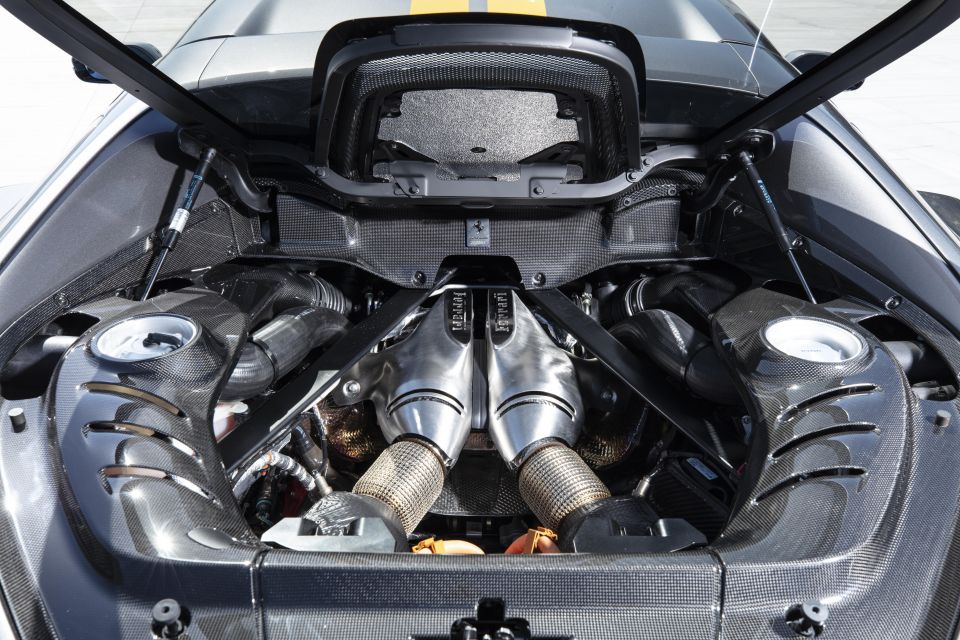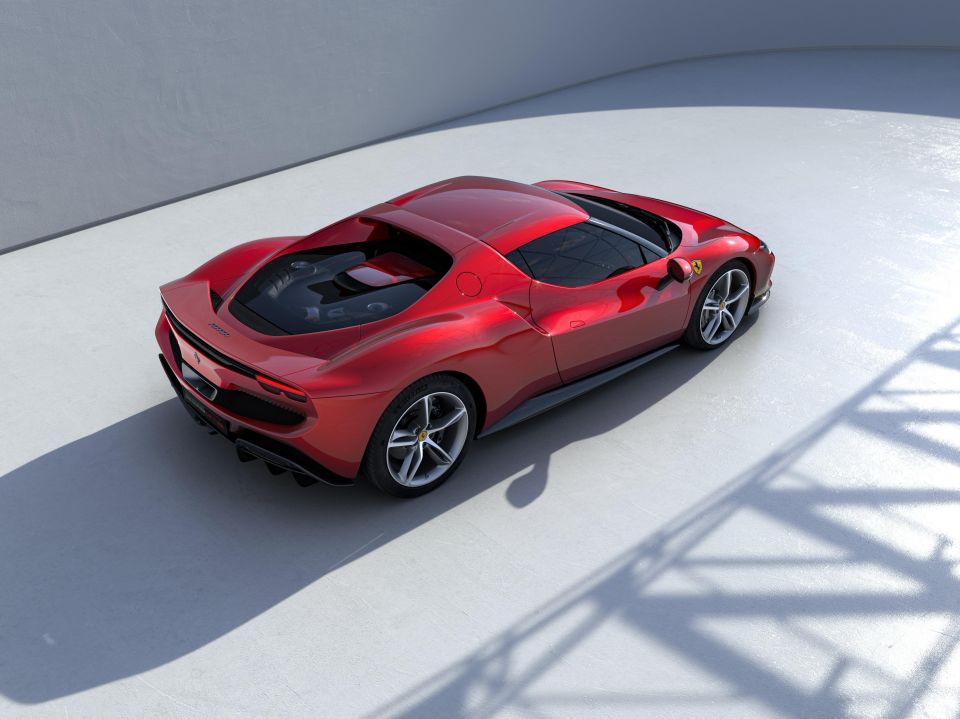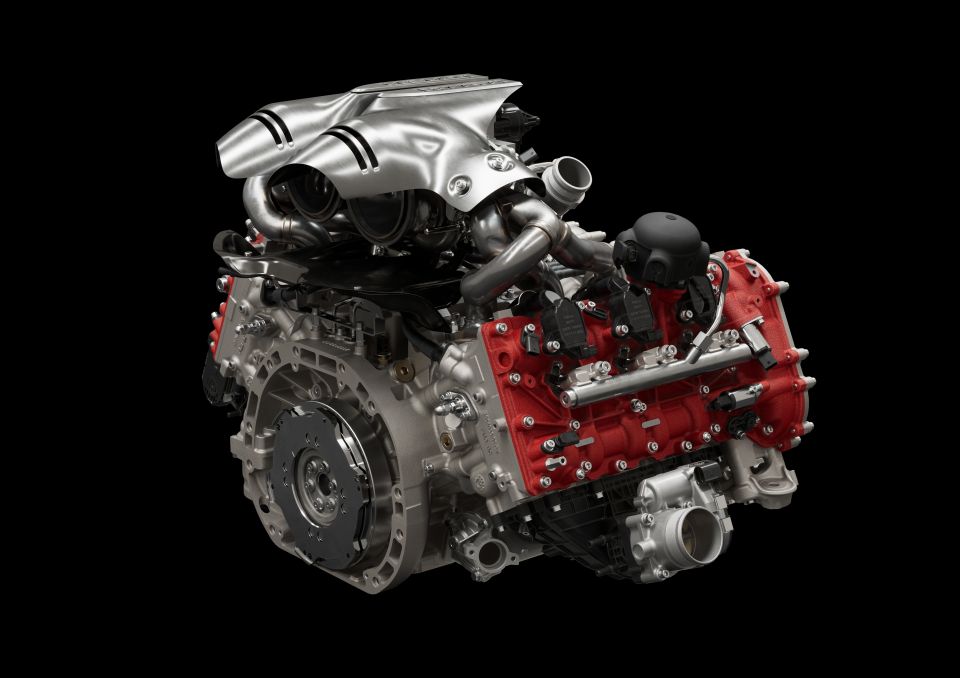

Anthony Crawford
1990 Lamborghini Countach review
6 Days Ago

Senior Road Tester
It might be a plug-in hybrid that can drive 25km on electric power only, but the new Ferrari 296 GTB’s V6 turbo engine is itself a clean-sheet design, heralding a new chapter for Ferrari’s Berlinetta family with truly staggering performance on tap.
By combining a powerful new turbocharged V6 petrol engine with an electric motor installed between the mid-mounted engine and gearbox, the 296 GTB develops an astonishing 610kW of power and 740Nm of torque. Its electric vehicle (EV) range comes from a 7.5kWh battery.
It standard GTB guise (you can get the Assetto Fiorano Package), it can rocket from standstill to 100km/h in 2.9 seconds, and from 0-200km/h in a mind-blowing 7.3 seconds. V-max is 330km/h.
It also claims a power-to-weight output record for its segment (221hp per litre).

Interestingly, Ferrari recently previewed its 296 GT3 racer without electric assistance ahead of its 2023 debut on the track.
“The decision to create an entirely new engine from the ground up for the all-new 296 GTB was in response to demands for a new high-performance car that’s fun to drive,” says Ferrari V6 engine project leader Attilio Pietroni.
The six-cylinder turbocharged engine features an innovative architecture, where cylinder banks are arranged at a 120-degree angle allowing the turbochargers to be housed in the centre of the ‘vee’.
MORE: 2022 Ferrari 296 GTB review

Switching from an eight-cylinder to a six-cylinder engine brought with it a 30kg weight reduction. Engineers then set about lowering engine’s centre of gravity.
The class-leading output of 221bhp (165kW) per litre was achieved thanks to the increased pressure in the combustion chamber, which amounted to 10 per cent over previous applications.
The chamber itself features a 350-bar injection system that guarantees performance in terms of specific power and emissions.
The turbocharger impellers were completely redesigned to extend the performance map of the turbos as much as possible.

This measure alone allowed Ferrari to increase the turbocharger’s rev limit to 180,000rpm, as well as provide a 24 per cent boost pressure over previous turbo applications by Ferrari.
The turbochargers themselves have also been redesigned to reduce rotating masses (reduced rotor inertia) and optimised for more efficient fluid dynamics. The diameter of the compressor wheel diameter was reduced by five per cent and the turbine wheel diameter by 11 per cent without compromising the turbo’s performance.
The crankshaft in the 296 GTB is also a completely new component with its crank pins orientated at 120-degrees. The crankshaft is both forged and twisted with the objective of achieving 100 per cent balance of rotating masses and 25 per cent of alternate masses.

This type of balance helps to minimise stress on the main bearings without penalising crankshaft masses.
The specific combustion sequence of the new Ferrari V6 engine stems from the layout of the new crankpins, allowing for equal combustion, optimum performance and a unique sound. The vee architecture with equal crankshaft symmetries gives a regular firing order frequency with equal-spaced firing.
The V6 makes a clean and intense sound which is piped to behind the driver’s seat from both the exhaust manifold and intake sources through a completely redesigned and retuned ‘hot tube’ system. Ferrari describes the engine sound as extremely ‘pure’ and formed by multiples of the third-order harmonics.

The result is a high-frequency sound typical of a naturally aspirated V12 engine – from low down in the rev range through to the limiter at 8500rpm. In fact, so similar in note is the sound that Ferrari’s engineers dubbed the new engine ‘piccolo (little) V12’.
A key feature of the new engine is that hot-vee architecture, which involves having two central turbos above the engine and the intake system and the plenums in the lower side of the engine. Critical, because it allowed Ferrari to develop the most compact and highest performance intake line tract.
The reason the 296 GTB has a unique and centralised exhaust outlet is due to the exhaust line being positioned in the upper part of the engine compartment, extending from the engine towards the rear of the car, so the two cylinder back headers meet in the car’s central rear section.

Not only is rectangular exhaust outlet a new feature on a mid-engine Ferrari, it’s also responsible for one of the best exhaust notes in the business.
The linearity of the exhaust line is one of the reasons for the 296 GTB’s category-smashing performance. It comes down to the reduction of back pressure and losses, even through the exhaust treatment system with a pre-catalyser and an inline particulate filter on both cylinder banks.
The 296 GTB’s exhaust system is also lighter than previous versions used by Ferrari thanks to the use of Inconel – a steel/nickel alloy that allowed for very thin wall thicknesses and structural resistance to high temperatures and stresses.

Moreover, it eliminates the need for a bulky or heavy silencer by using the latest-generation bypass valve for the task of modulating the noise level and providing the character for the exhaust note.
The exhaust tip itself is manufactured form a special steel alloy known as Aluchrom which is resistant to aging and therefore is able to maintain shine and brilliance over time despite being subjected to high temperatures.
The oil pump on the 296 GTB is also completely new and specially developed for the V6 Turbo. It’s a variable displacement pump that allows the continuous control of the delivery oil pressure as the engine speed and load changes.

Additionally, the scavenge pumps were also entirely redesigned and customised for the V6, with the goal of minimising friction and pumping losses. Specifically, the V6 uses six scavenge rotors.
Distribution is via gears and timing chains that transfer drive from the crankshaft to the pump unit. For the first time on Ferrari engines the distribution uses a dedicated hydraulic tensioner to guarantee chain dynamics and the maximum chain tension limit.
Secondary branches involve chains and hydraulic tensioners with different settings for the left and right cylinder banks. Also, the valve train has roller finger followers with new hydraulic tappets exclusive to the V6. As, well, the valve-lift profiles have been redesigned for both intake and exhaust to maximise efficiencies in the combustion chamber.
Read the full review of the all-new Ferrari 296 GTB and 296 GTB Assetto Fiorano including road drive and track test here.
Where expert car reviews meet expert car buying – CarExpert gives you trusted advice, personalised service and real savings on your next new car.


Anthony Crawford
6 Days Ago


Matt Campbell
5 Days Ago


James Wong
4 Days Ago


Max Davies
2 Days Ago


Josh Nevett
2 Days Ago


Josh Nevett
23 Hours Ago